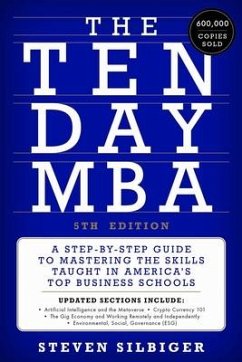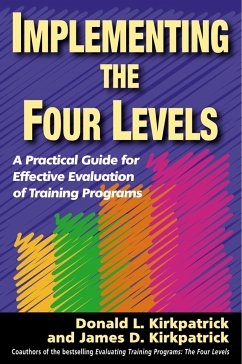
An Ethics Comparison Between the Military and Business Professional
Versandkostenfrei!
Versandfertig in über 4 Wochen
25,99 €
inkl. MwSt.
Weitere Ausgaben:

PAYBACK Punkte
13 °P sammeln!
Every individual possesses a morality compass. A morality compass is an individual's "inner voice" that provides guidance whenever an ethical dilemma presents itself. I firmly believe that an individual's morality compass is calibrated through innate knowledge, personal experiences, personal values, and organizational affiliations. In this research paper, I will focus on the organizational affiliation aspect. Society employs a set of ethical standards that it expects all individuals to follow. The question that this paper attempts to address is whether or not society's baseline standard is equ...
Every individual possesses a morality compass. A morality compass is an individual's "inner voice" that provides guidance whenever an ethical dilemma presents itself. I firmly believe that an individual's morality compass is calibrated through innate knowledge, personal experiences, personal values, and organizational affiliations. In this research paper, I will focus on the organizational affiliation aspect. Society employs a set of ethical standards that it expects all individuals to follow. The question that this paper attempts to address is whether or not society's baseline standard is equally applied to all elements of society, or does society single out certain groups and hold those groups to a higher ethical standard. In an effort to present sound background information on the military's standard of ethics, I have reviewed the work of numerous authors in the area of military ethics. I have performed the same actions to gain knowledge of standard business ethics and standard society ethics. This work has been selected by scholars as being culturally important, and is part of the knowledge base of civilization as we know it. This work was reproduced from the original artifact, and remains as true to the original work as possible. Therefore, you will see the original copyright references, library stamps (as most of these works have been housed in our most important libraries around the world), and other notations in the work. This work is in the public domain in the United States of America, and possibly other nations. Within the United States, you may freely copy and distribute this work, as no entity (individual or corporate) has a copyright on the body of the work. As a reproduction of a historical artifact, this work may contain missing or blurred pages, poor pictures, errant marks, etc. Scholars believe, and we concur, that this work is important enough to be preserved, reproduced, and made generally available to the public. We appreciate your support of the preservation process, and thank you for being an important part of keeping this knowledge alive and relevant.







![Prominent People of the Maritime Provinces [in Business and Professional Life] Cover Prominent People of the Maritime Provinces [in Business and Professional Life]](https://bilder.buecher.de/produkte/71/71611/71611604n.jpg)




